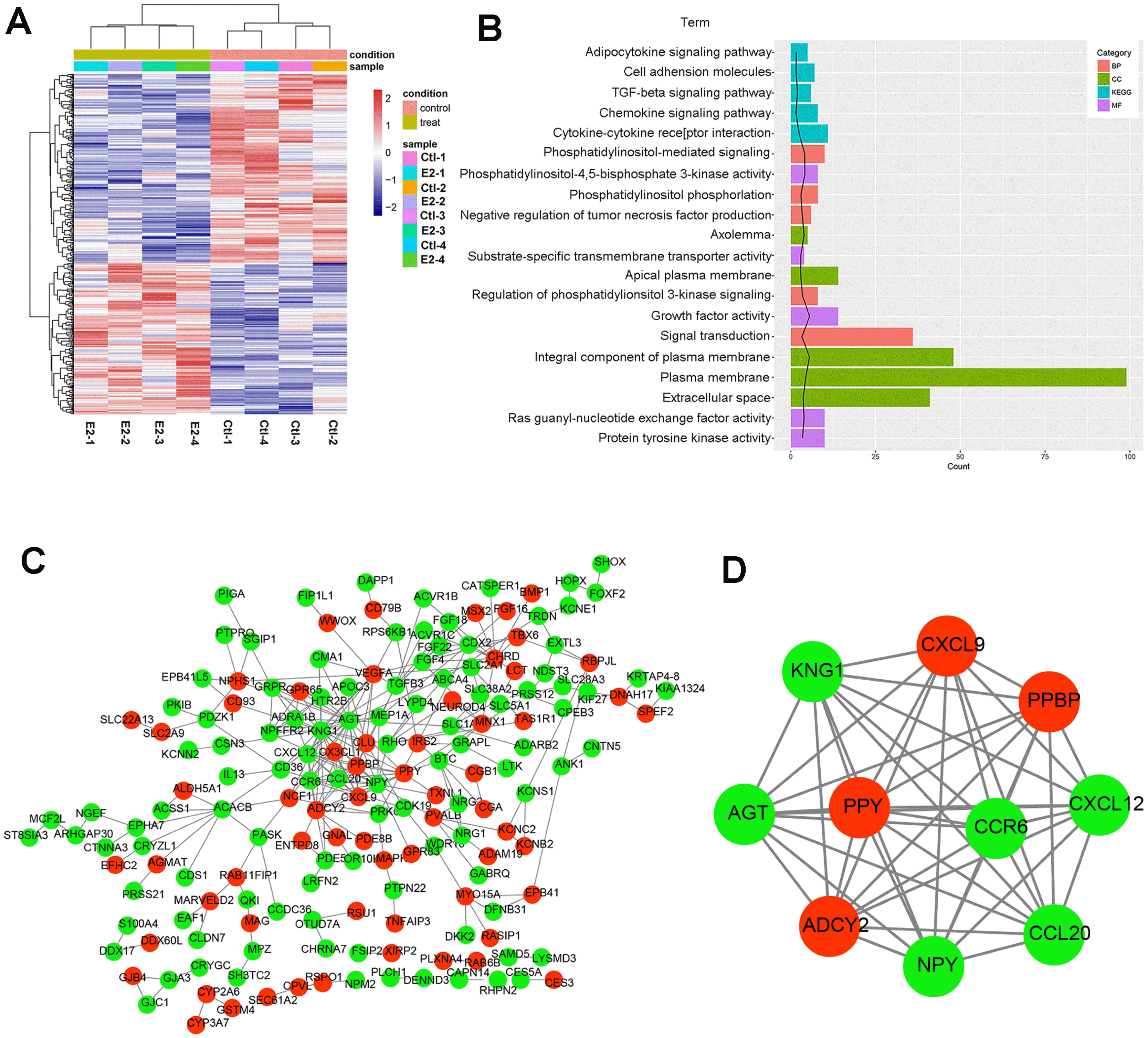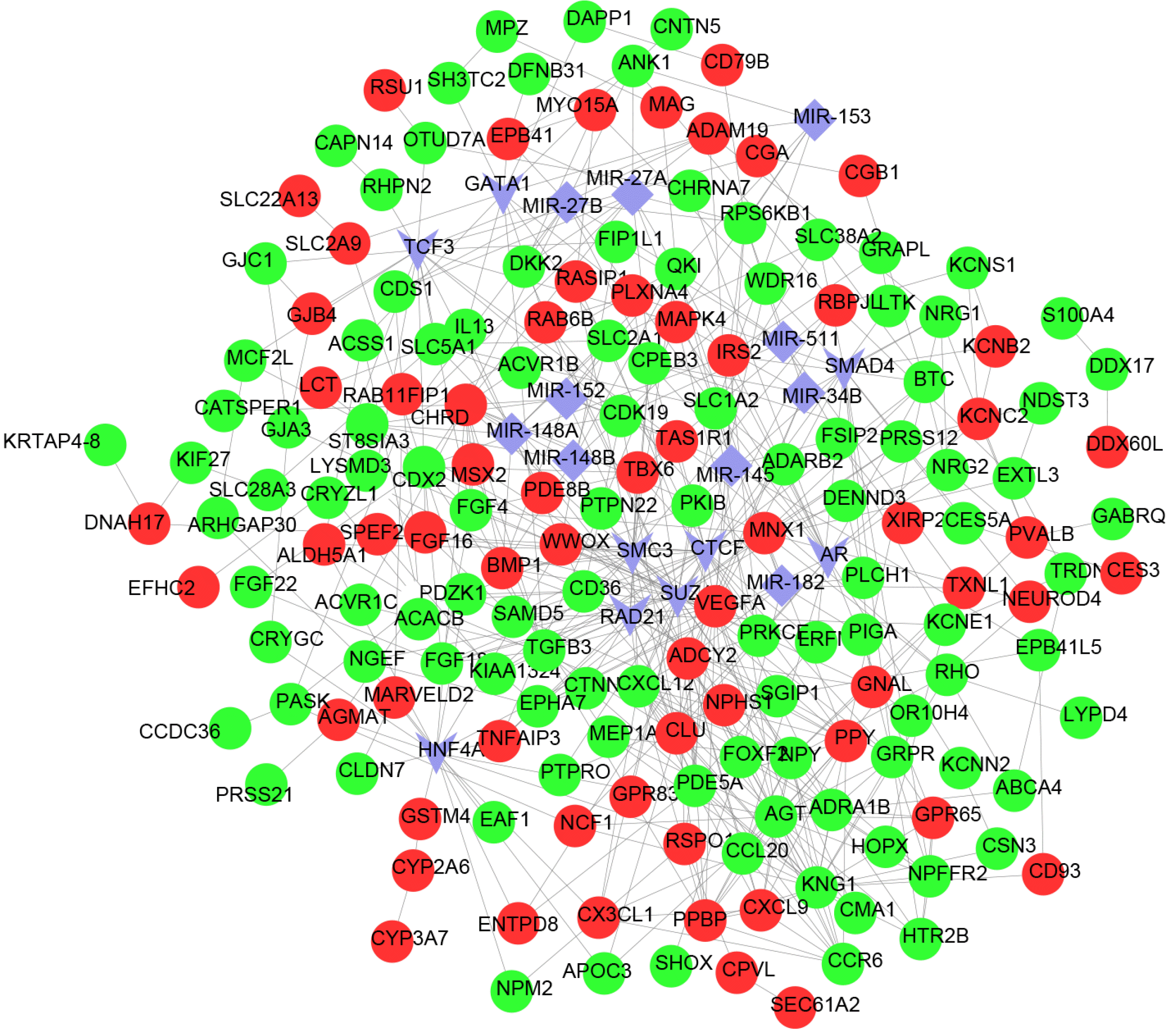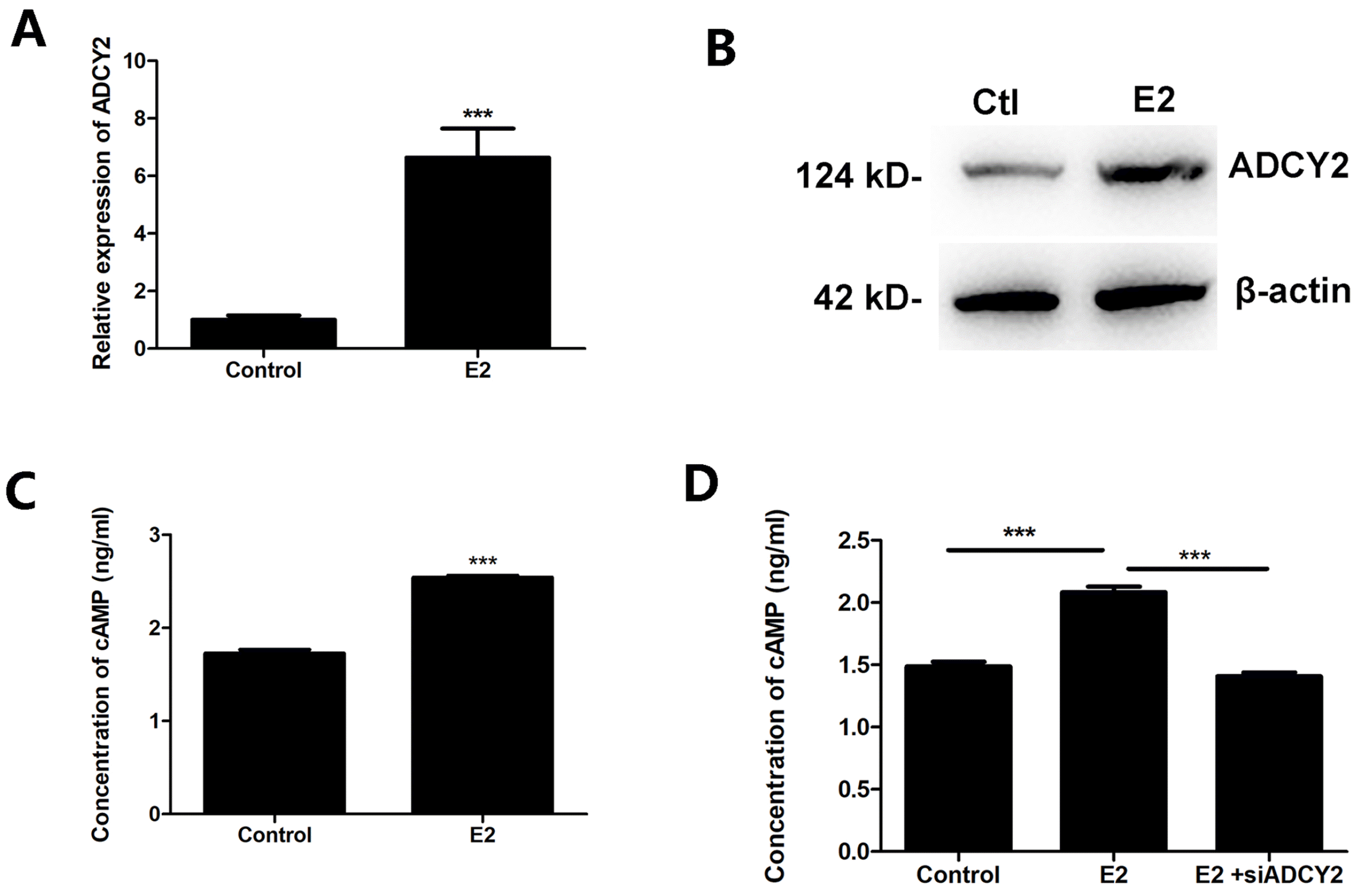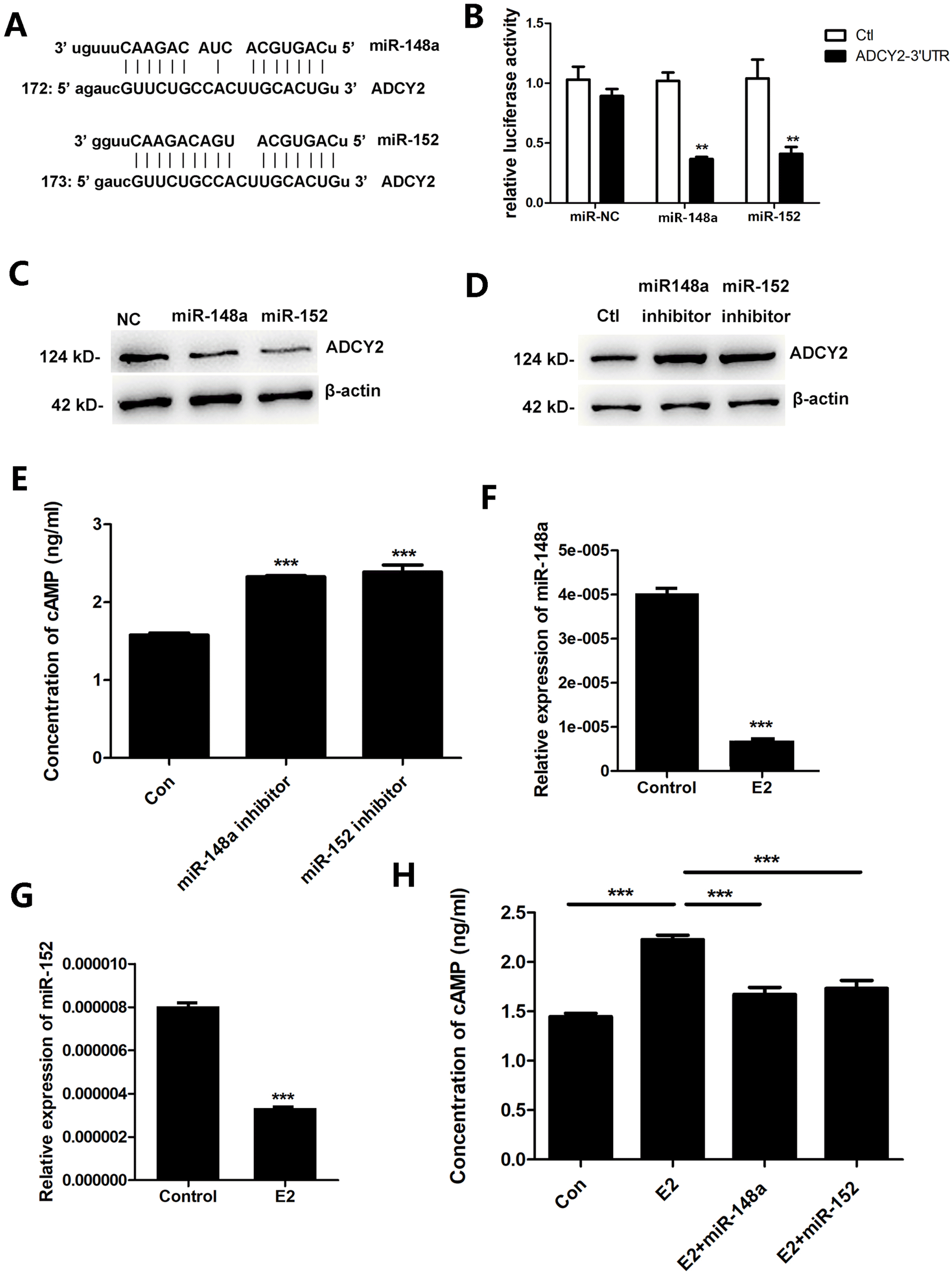1. Karahuseyinoglu S, Cinar O, Kilic E, Kara F, Akay GG, Demiralp DO, Tukun A, Uckan D, Can A. 2007; Biology of stem cells in human umbilical cord stroma: in situ and in vitro surveys. Stem Cells. 25:319–331. DOI:
10.1634/stemcells.2006-0286. PMID:
17053211.

2. Liu L, Zhao X, Li P, Zhao G, Wang Y, Hu Y, Hou Y. 2012; A novel way to isolate MSCs from umbilical cords. Eur J Immunol. 42:2190–2193. DOI:
10.1002/eji.201142356. PMID:
22585466.

3. Bianco P, Cao X, Frenette PS, Mao JJ, Robey PG, Simmons PJ, Wang CY. 2013; The meaning, the sense and the significance: translating the science of mesenchymal stem cells into medicine. Nat Med. 19:35–42. DOI:
10.1038/nm.3028. PMID:
23296015. PMCID:
PMC3998103.

4. Zhao G, Zhou X, Chen S, Miao H, Fan H, Wang Z, Hu Y, Hou Y. 2014; Differential expression of microRNAs in decidua-derived mesenchymal stem cells from patients with pre-eclampsia. J Biomed Sci. 21:81. DOI:
10.1186/s12929-014-0081-3. PMID:
25135655. PMCID:
PMC4237795.

5. Cutler AJ, Limbani V, Girdlestone J, Navarrete CV. 2010; Umbilical cord-derived mesenchymal stromal cells modulate monocyte function to suppress T cell proliferation. J Immunol. 185:6617–6623. DOI:
10.4049/jimmunol.1002239. PMID:
20980628.

6. Yen BL, Huang HI, Chien CC, Jui HY, Ko BS, Yao M, Shun CT, Yen ML, Lee MC, Chen YC. 2005; Isolation of multipotent cells from human term placenta. Stem Cells. 23:3–9. DOI:
10.1634/stemcells.2004-0098. PMID:
15625118.

7. Berkane N, Liere P, Oudinet JP, Hertig A, Lefèvre G, Pluchino N, Schumacher M, Chabbert-Buffet N. 2017; From pregnancy to preeclampsia: a key role for estrogens. Endocr Rev. 38:123–144. DOI:
10.1210/er.2016-1065. PMID:
28323944.

8. Wan J, Hu Z, Zeng K, Yin Y, Zhao M, Chen M, Chen Q. 2018; The reduction in circulating levels of estrogen and progesterone in women with preeclampsia. Pregnancy Hypertens. 11:18–25. DOI:
10.1016/j.preghy.2017.12.003. PMID:
29523268.

9. Jobe SO, Tyler CT, Magness RR. 2013; Aberrant synthesis, metabolism, and plasma accumulation of circulating estrogens and estrogen metabolites in preeclampsia implications for vascular dysfunction. Hypertension. 61:480–487. DOI:
10.1161/HYPERTENSIONAHA.111.201624. PMID:
23319542. PMCID:
PMC3674508.

10. Li X, Song Y, Liu D, Zhao J, Xu J, Ren J, Hu Y, Wang Z, Hou Y, Zhao G. 2017; MiR-495 promotes senescence of mesenchymal stem cells by targeting Bmi-1. Cell Physiol Biochem. 42:780–796. DOI:
10.1159/000478069. PMID:
28628915.

11. Li X, Song Y, Liu F, Liu D, Miao H, Ren J, Xu J, Ding L, Hu Y, Wang Z, Hou Y, Zhao G. 2017; Long non-coding RNA MALAT1 promotes proliferation, angiogenesis, and immunosuppressive properties of mesenchymal stem cells by inducing VEGF and IDO. J Cell Biochem. 118:2780–2791. DOI:
10.1002/jcb.25927. PMID:
28176360.

12. Liu L, Zhao G, Fan H, Zhao X, Li P, Wang Z, Hu Y, Hou Y. 2014; Mesenchymal stem cells ameliorate Th1-induced pre-eclampsia-like symptoms in mice via the suppression of TNF-
α expression. PLoS One. 9:e88036. DOI:
10.1371/journal.pone.0088036. PMID:
24558374. PMCID:
PMC3928118.
13. Zhao G, Miao H, Li X, Chen S, Hu Y, Wang Z, Hou Y. 2016; TGF-
β3-induced miR-494 inhibits macrophage polarization via suppressing PGE2 secretion in mesenchymal stem cells. FEBS Lett. 590:1602–1613. DOI:
10.1002/1873-3468.12200. PMID:
27149081.

14. Smyth GK, Ritchie M, Thorne N, Wettenhall J. Gentleman R, Carey V, Huber W, editors. 2005. Limma: linear models for microarray data. Bioinformatics and Computational Biology Solutions Using R and Bioconductor: Statistics for Biology and Health. Springer;New York:

15. Tang Y, Li M, Wang J, Pan Y, Wu FX. 2015; CytoNCA: a cytoscape plugin for centrality analysis and evaluation of protein interaction networks. Biosystems. 127:67–72. DOI:
10.1016/j.biosystems.2014.11.005. PMID:
25451770.

16. Opsahl T, Agneessens F, Skvoretz J. 2010; Node centrality in weighted networks: generalizing degree and shortest paths. Soc Netw. 32:245–251. DOI:
10.1016/j.socnet.2010.03.006.

17. Cukierski WJ, Foran DJ. 2008; Using betweenness centrality to identify manifold shortcuts. Proc IEEE Int Conf Data Min. 2008:949–958. DOI:
10.1109/ICDMW.2008.39. PMID:
20607142. PMCID:
PMC2895570.

18. Du Y, Gao C, Chen X, Hu Y, Sadiq R, Deng Y. 2015; A new closeness centrality measure via effective distance in complex networks. Chaos: Interdiscip J Nonlinear Sci. 25:033112. DOI:
10.1063/1.4916215. PMID:
25833434.

19. Bader GD, Hogue CW. 2003; An automated method for finding molecular complexes in large protein interaction networks. BMC Bioinformatics. 4:2. DOI:
10.1186/1471-2105-4-2. PMID:
12525261. PMCID:
PMC149346.
20. Yu Q, Peng C, Ye Z, Tang Z, Li S, Xiao L, Liu S, Yang Y, Zhao M, Zhang Y, Lin H. 2019; An estradiol-17
β/miRNA-26a/cyp19a1a regulatory feedback loop in the protogynous hermaphroditic fish, Epinephelus coioides. Mol Cell Endocrinol. [Epub ahead of print]. DOI:
10.1016/j.mce.2019.110689. PMID:
31891771.
21. Pérez-Cremades D, Mompeón A, Vidal-Gómez X, Hermenegildo C, Novella S. 2018; miRNA as a new regulatory mechanism of estrogen vascular action. Int J Mol Sci. 19:E473. DOI:
10.3390/ijms19020473. PMID:
29415433. PMCID:
PMC5855695.

22. Liu G, Lu Y, Mai Z, Liu R, Peng Z, Chen L, Chen Z, Wang R, Ai H. 2019; Suppressing MicroRNA-30b by estrogen promotes osteogenesis in bone marrow mesenchymal stem cells. Stem Cells Int. 2019:7547506. DOI:
10.1155/2019/7547506. PMID:
31089333. PMCID:
PMC6476012.

23. Sethna F, Feng W, Ding Q, Robison AJ, Feng Y, Wang H. 2017; Enhanced expression of ADCY1 underlies aberrant neuronal signalling and behaviour in a syndromic autism model. Nat Commun. 8:14359. DOI:
10.1038/ncomms14359. PMID:
28218269. PMCID:
PMC5321753.

24. Shen JX, Cooper DM. 2013; AKAP79, PKC, PKA and PDE4 participate in a Gq-linked muscarinic receptor and adenylate cyclase 2 cAMP signalling complex. Biochem J. 455:47–56. DOI:
10.1042/BJ20130359. PMID:
23889134. PMCID:
PMC3968274.

25. Gether U. 2000; Uncovering molecular mechanisms involved in activation of G protein-coupled receptors. Endocr Rev. 21:90–113. DOI:
10.1210/edrv.21.1.0390. PMID:
10696571.

26. Jekabsons K, Riekstina U, Parfejevs V, Laizane A, Pavasare M, Lencberga N, Jansone B, Muceniece R. 2011; Culture-expanded human dermal stem cells exhibit donor to donor differences in cAMP generation. Cell Tissue Res. 345:253–263. DOI:
10.1007/s00441-011-1203-9. PMID:
21698527.

27. Drucker DJ. 2003; Glucagon-like peptides: regulators of cell proliferation, differentiation, and apoptosis. Mol Endocrinol. 17:161–171. DOI:
10.1210/me.2002-0306. PMID:
12554744.

28. Yang DC, Tsay HJ, Lin SY, Chiou SH, Li MJ, Chang TJ, Hung SC. 2008; cAMP/PKA regulates osteogenesis, adipogenesis and ratio of RANKL/OPG mRNA expression in mesenchymal stem cells by suppressing leptin. PLoS One. 3:e1540. DOI:
10.1371/journal.pone.0001540. PMID:
18253488. PMCID:
PMC2212109.

29. Siddappa R, Martens A, Doorn J, Leusink A, Olivo C, Licht R, van Rijn L, Gaspar C, Fodde R, Janssen F, van Blitterswijk C, de Boer J. 2008; cAMP/PKA pathway activation in human mesenchymal stem cells in vitro results in robust bone formation in vivo. Proc Natl Acad Sci U S A. 105:7281–7286. DOI:
10.1073/pnas.0711190105. PMID:
18490653. PMCID:
PMC2387183.

30. Lu LL, Liu YJ, Yang SG, Zhao QJ, Wang X, Gong W, Han ZB, Xu ZS, Lu YX, Liu D, Chen ZZ, Han ZC. 2006; Isolation and characterization of human umbilical cord mesenchymal stem cells with hematopoiesis-supportive function and other potentials. Haematologica. 91:1017–1026. PMID:
16870554.
31. Yang A, Zhang H, Sun Y, Wang Y, Yang X, Yang X, Zhang H, Guo W, Zhu G, Tian J, Jia Y, Jiang Y. 2016; Modulation of FABP4 hypomethylation by DNMT1 and its inverse interaction with miR-148a/152 in the placenta of preeclamptic rats and HTR-8 cells. Placenta. 46:49–62. DOI:
10.1016/j.placenta.2016.08.086. PMID:
27697222.

32. Zhang L, Yuan JM, Zhao RH, Wang LM, Tu ZB. 2019; Correlation of MiR-152 expression with VEGF expression in placental tissue of preeclampsia rat and its influence on apoptosis of trophoblast cells. Eur Rev Med Pharmacol Sci. 23:3553–3560. DOI:
10.26355/eurrev_201905_17776. PMID:
31114978.
33. Li Q, Long A, Jiang L, Cai L, Xie LI, Gu J, Chen X, Tan L. 2015; Quantification of preeclampsia-related microRNAs in maternal serum. Biomed Rep. 3:792–796. DOI:
10.3892/br.2015.524. PMID:
26623017. PMCID:
PMC4660598.

34. Shi C, Zhang M, Tong M, Yang L, Pang L, Chen L, Xu G, Chi X, Hong Q, Ni Y, Ji C, Guo X. 2015; miR-148a is associated with obesity and modulates adipocyte differentiation of mesenchymal stem cells through Wnt signaling. Sci Rep. 5:9930. DOI:
10.1038/srep09930. PMID:
26001136. PMCID:
PMC4441322.

35. Jacenik D, Cygankiewicz AI, Fichna J, Mokrowiecka A, Małecka-Panas E, Krajewska WM. 2018; Estrogen signaling deregulation related with local immune response modulation in irritable bowel syndrome. Mol Cell Endocrinol. 471:89–96. DOI:
10.1016/j.mce.2017.07.036. PMID:
28774781.

36. He SZ, Li J, Bao HC, Wang MM, Wang XR, Huang X, Li FH, Zhang W, Xu AL, Fang HC, Sheng YX. 2018; G protein-coupled estrogen receptor/miR-148a/human leukocyte antigen-G signaling pathway mediates cell apoptosis of ovarian endometriosis. Mol Med Rep. 18:1141–1148. DOI:
10.3892/mmr.2018.9039. PMID:
29845209.

37. Rao ZZ, Zhang XW, Ding YL, Yang MY. 2017; miR-148a-mediated estrogen-induced cholestasis in intrahepatic cholestasis of pregnancy: Role of PXR/MRP3. PLoS One. 12:e0178702. DOI:
10.1371/journal.pone.0178702. PMID:
28575098. PMCID:
PMC5457162.

38. Chen MJ, Cheng YM, Chen CC, Chen YC, Shen CJ. 2017; MiR-148a and miR-152 reduce tamoxifen resistance in ER+ breast cancer via downregulating ALCAM. Biochem Biophys Res Commun. 483:840–846. DOI:
10.1016/j.bbrc.2017.01.012. PMID:
28063929.









 PDF
PDF Citation
Citation Print
Print


 XML Download
XML Download